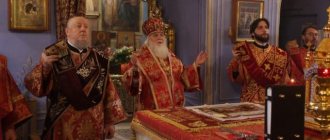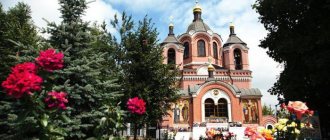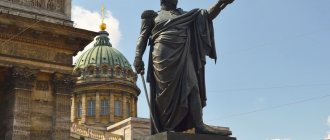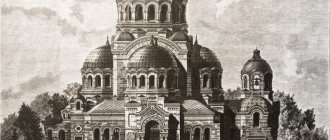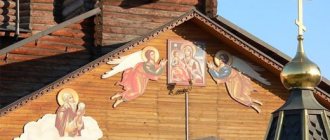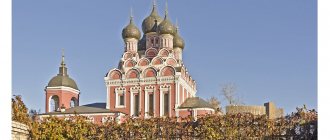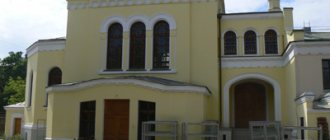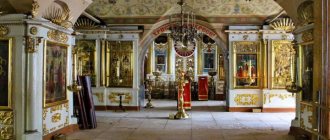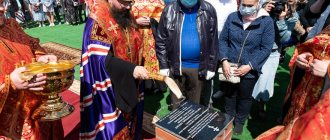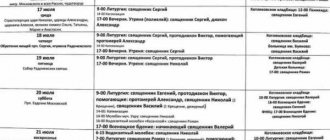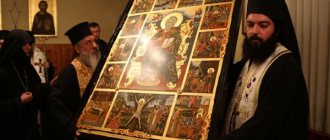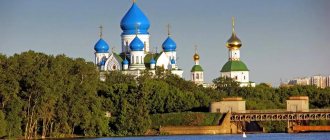The manor church in the Chernaya Gryaz estate of the princes Kantemirov near Moscow was built in 1722, a year before the death of Dmitry Konstantinovich Kantemirov, who founded it. The further development of the temple in Tsaritsyno (the later name of the estate) was owed to his son Matvey.
The estate was bought by the state for the construction of the residence of Catherine the Great; the luxurious mansions were built first by Vasily Bazhenov, then by Matvey Kazakov. The complex, which the empress did not like, was completed during a transitional period in history, from 1984 to 2007.
It is not known for certain what didn’t suit Ekaterina in the new buildings, but in the photo of the quadcopter they look just great. The construction was completed not very long ago, but now Tsaritsyno is a whole complex with a park and a museum. Against the backdrop of a cascade of reservoirs with unusual structures and a whole set of palaces, the temple in Tsaritsyno, indicated by an arrow in the high-rise photograph, looks modest.
That ancient temple appeared in the year 450, to commemorate the miraculous healing of a blind man with mud from a spring. The voice of the Mother of God dictated the method of healing to Emperor Leo the First, and he founded the Church of the Mother of God, the Life-Giving Spring. The icon describing the appearance of the Mother of God was placed in churches dedicated to her, which are now in Ukraine, Belarus and Russia.
Temple in Tsaritsyno, within Moscow
The building of 1722 was erected to replace the wooden church of the Streshnev boyars, who previously owned the estate. During the construction of the palace, Bazhenov preserved the temple in Tsaritsyno, then it went through several reconstructions and additions, the last one was carried out by the architect Lavin. The church was closed only in 1939 and was used to house an electrical transformer. In the 70s of the last century there was a printing house there, then a carpentry workshop. The church in Tsaritsino was returned to the Russian Orthodox Church in 1990; the absence of serious damage made it possible to soon consecrate the church and resume services.
A photograph from the northeast gives an idea of the architectural appearance of the temple in Tsaritsyno today. The tetrahedral shape of the altar apse is not quite common; usually the outlines are smooth. Otherwise, everything is traditional - a quadruple base, with an octagonal central volume on it. Next is a rectangular refectory and a bell tower, made at the same time as the entire temple.
The traditional government protection warning sign provides some information about the church's founder. It is worth saying that the scientific works of Dmitry Cantemir had a historical and philosophical orientation and concerned Moldova and the Ottoman Empire. He also wrote the first historical novel in the Moldavian language. There were significantly more political events and titles in Cantemir’s life.
Being the son of the ruler (sovereign) of Moldova, he himself was confirmed in office by the Turkish Sultan with delays and delays. Contrary to the condition set by the Sultan to prepare for war with Russia, he entered into an alliance with Peter the Great, participated in the Prut campaign, and then lived in Russia. Kantemir - the elder was an imperial adviser and comrade-in-arms, received the title of His Serene Highness, and was a senator with the rank of Privy Councilor.
Temple of the Icon of the Mother of God “Life-Giving Spring” in Tsaritsyno Park
The first church in Tsaritsino was built back in the 17th century. At first it was wooden, which quickly fell into disrepair and was rebuilt. It was made of stone from below with a wooden upper superstructure and dome. During the ownership of the Black Mud estate (the former name of Tsaritsyno) by the prince of the Moldavian family Cantemir, in response to his request, the Moscow Metropolitan allowed the construction of a new one, a brick one, on the site of the old church. The construction was carried out in the “Elizabethan Baroque” style, and white stone was used for the basement level and decoration. A bell tower of two tiers is attached to the main building. The church was consecrated in the summer of 1765.
In 1775, Catherine the Great became the owner of the Black Mud plot, which she renamed the village of Tsaritsyno. An imperial residence with a huge park is planned here. This was entrusted to the court architect Vasily Bazhenov, who decides to preserve the temple in a new architectural complex.
The War of 1812 left traces on all the buildings of Tsaritsino near Moscow, but the church building was especially damaged, which was smashed and looted by Napoleon’s army stationed here.
Since the 80s of the 19th century, an elite dacha community has emerged on the territory of the estate. The temple with the bell tower was restored and rebuilt. The refectory was expanded, the walls and vault were decorated with paintings and stucco, the floor was covered with slabs with marble chips, and a chapel with an altar was installed on the south side. Two more tiers of the bell tower were completed, the number of bells was increased to 6, and the largest of them weighed almost 3000 kg.
The October Revolution of 1917 did not make any adjustments to the service of the church. And this is despite the close proximity and activity of the “Political Sports Youth Union”, which is located on the premises of the Third Cavalry Corps. It is known that until 1934-38 the temple was in operation, and it was visited by the descendants of the Obolenskys and Sheremetevs, residents of the village of Lenino (formerly Tsaritsyno).
The temple lost its bells in 1934, and in 1938 it was completely closed. Local residents preserve the iconostasis, many icons are transferred to museums, some are saved by parishioners and clergy, but most, unfortunately, are destroyed.
The temple building changes its “owners” many times:
- in the 1940s it is used instead of a transformer point;
- a printing house has been operating here since 1972;
- Since 1975, a woodworking workshop belonging to the Soyuzrestavratsia association has been located inside.
Finally, in 1990, the building was returned to the believers and services were resumed. And in May 1998, the temple was re-consecrated by Patriarch Alexy II.
Interior decoration of the temple in Tsaritsino
The name of the temple was given in honor of the icon of the Mother of God “Life-Giving Spring”, and the first such icon received its name from a Byzantine temple near Constantinople. The image is believed to help women wishing to conceive a child.
There are two chapels in the temple: the northern one of the Great Martyr Dmitry of Thessalonica, the southern one of the Kazan Icon of the Mother of God.
The church has an Orthodox library, a Sunday school, and a church that helps provide psychological and legal assistance.
Service Schedule
A large number of parishioners visit the church every day. It preserves and stores such shrines as the ark with particles of the holy relics of Moscow Tikhon, St. M. Voronezh, St. Kiev-Pechersk and many others. Also here is the holy face of the icon of the Mother of God “Life-Giving Spring”.
Divine services in the Church of the Life-Giving Spring icon in Tsaritsyno are held daily:
- On weekdays, the reading of the Liturgies begins at 9:00 am and 17:00 pm.
- On weekends and holidays at 9:00 and 10:00 am, and evening at 17:00 pm.
In addition, the schedule of services at the Life-Giving Spring Church in Tsaritsyno includes the reading of the Liturgy with an akathist to the Mother of God every Sunday. Getting to the temple is not difficult. If you go by metro, then you need to get to the Orekhovo, Domodedovskaya, and Tsaritsyno metro stations. From them you need to walk for about 10 minutes. Buses No. 151, 203, 269, 679, 182, 756 also go to the church.
The best article for you, go to: Church of the Nativity of the Blessed Virgin Mary in Krylatskoye
The Lord is always with you!
External appearance of the temple in Tsaritsino
The bell tower, which also serves as the entrance to the temple in Tsaritsino, consists of four tiers of decreasing height. Above the entrance is a mosaic image of the Virgin and Child, and next to the doors is a previously seen sign. The second tier with ordinary glazing is the abode of bell ringers; the belfry occupies the two upper tiers.
The highest third tier is intended for the largest bells; the area of the openings there is the largest. The opening is outlined by a large arch, inside of which there are two narrow ones, converging in the middle into a single opening. On the fourth tier there is no external arch, the opening and bells are smaller. On the hipped roof there is a light drum with a relatively small dome.
The summer surroundings surrounding the temple in Tsaritsino are very picturesque and well-groomed. Evenly trimmed lawn grass is separated by curbs from neat walking paths. There are many trees around the building, especially a giant larch, clearly of considerable age, that stands out. People in the church fence move slowly and respectably, only restless children can run around and lie on the grass.
A winter view from almost the same point shows the greatly changed appearance of the temple in Tsaritsyno. The trunks and branches of the trees that have lost their leaves have become almost invisible; the larch that has lost its needles does not look like a summer larch. The few passers-by are dressed very differently, the Christmas slogan on the fence reminds of the already obvious time of year.
But in winter, nothing prevents you from examining the appearance and design features that characterize the temple in Tsaritsyno. The method chosen by the builders to highlight significant elements of the building is striking. The pilasters and window casings, as well as some other details of the structure, are painted white.
Like all Russian nature, the surroundings of the church have their charms in any season of the year, and every weather is good.
All the more indifferent is seasonality when applied to a spiritual refuge, if only true faith leads there, and not habit or pretense. Tags: MoscowRussiaestate-museumtempleTsaritsino
History of the temple
Temple - chapel “Life-Giving Spring” in the village of Bykovo.
Brief information:
Following historical information, in the village of Bykovo on the banks of the Bykovka River, a light stone canopy was built over the spring, in the same style as the church in honor of the Vladimir Icon of the Mother of God - the creation of the architect V.I. Bazhenov. All this was part of a single ensemble of the Bykovo-Maryino estate, the owner of which was Prince Izmailov M.M.
During times of unbelief and unrest, the canopy was destroyed to the ground. The temple building was not used for its intended purpose. In 1990, the temple was again opened to believers. In 1995, on the site of the holy well, a wooden chapel (“blue” was popularly called) was built. Construction was carried out with donations from believers and parishioners of the Church of the Vladimir Icon of the Mother of God under the leadership of the rector of the temple, Archpriest Alexy Ponomarev. There were no plans to hold services in the chapel; only a bathhouse was made, where many believers, while bathing, received healing.
But to the deep regret of the parishioners of the temple, in 1997 the chapel burned down. However, after 2 years, with the blessing of Metropolitan Juvenaly of Krutitsky and Kolomna, a temple-chapel was rebuilt on the same site and consecrated on September 2, 1999 in honor of the icon of the Mother of God “Life-Giving Source” by the cathedral of clergy of the Trinity Church in Ramenskoye.
Currently, services are held in the church-chapel on Sundays and holidays. The chapel is open to the public daily. The celebration of the icon of the Mother of God “Life-Giving Source” takes place on Friday of Easter week. There is a Sunday school at the church-chapel.
Archpriest Alexy Ponomarev was appointed rector.
From the book of local historian of the Ramensky district and Moscow region Alexey Timofeevich Saladin “Guide to suburban and dacha areas to the Ramenskoe station of the Moscow-Kazan railway with drawings and plans” M.; 1914
The road from the station to the village of Bykovo is a field all along its entire length, it is a simple country road. The first thing you can see from the road and meet at the entrance to the village is a beautiful Gothic church. Lancet windows and pilasters, turrets directed upward, all this is unusual in comparison with the rounded shapes of our national churches.
To the south of the estate lies the oblong lake Pleshkurka. This is, or rather, not a lake, but a river. It begins in the grassy swamps near the village of Vereya and flows into the Moscow River. Along the course, the channel either spreads widely, forming lakes, or narrows to 2-3 arshins, in the form of a small stream. This entire system is also called the Bykovka River or Ozerka River.
Some of the buildings in the village of Bykova and the dachas of the Ilyin estate are located on the beautiful, steep, birch-covered shore of Ozerka. Here, above the spring, there is a light stone chapel, in the same style as the church. The water in the lake is spring, clean and swimming is very good on the open shore in the meadows or in the estate’s baths.
Temple address: Bykovo village, Ramensky district, Moscow region, Kolkhoznaya str. 33a
Temple website: https://givistochnik.cerkov.ru/
